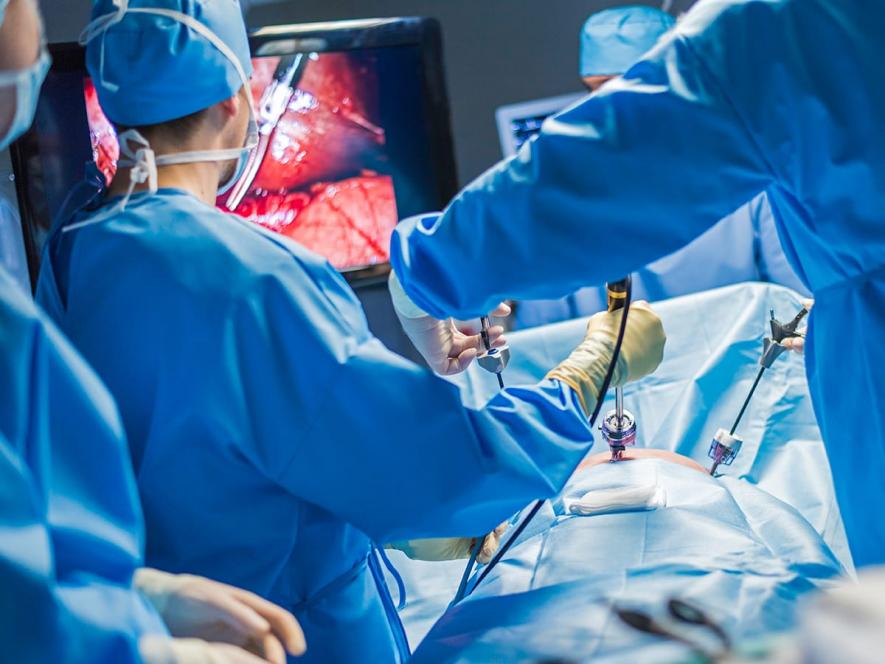
Laparoscopic surgery, also referred to as 'minimally invasive surgery' or simply 'keyhole surgery', describes a method of performing operations within the body without needing to make a large incision in the skin to access the internal organs.
A laparoscope is a long flexible tube equipped with a miniature video camera and light on the end that, along with a range of miniaturised surgical instruments, can be inserted into the abdominal cavity through a very small incision or set of incisions which are only 1 or 2cm in length.
Typically, a small amount of gas (normally CO2) is introduced into the abdominal cavity at the same time so that the surgeon is able to clearly see the organs.
Laparoscopic techniques were in use to operate on animals in the early 1900s, with the first laparoscopic procedure on a human conducted in 1910. Laparascopic techniques for a range of different types of surgery became commonplace from the 1990s.
Today most operations to repair herniae are conducted using laparoscopic surgery. The main reasons for this are:
- Shorter recovery times (patients are able to return to normal activites around a week earlier).
- Normally no need for a hospital stay after the procedure.
- Much smaller scars than in open surgery (1-2cm incisions as opposed to 4-5cm incisions).
- Generally, less pain after the procedure.
However, the laparoscopic approach does have some potential risk factors as compared to conventional open surgery. These relate to two factors in particular - firstly that the surgeon is using instruments operating at a distance and is not using his or her hands directly so is not able to 'feel' (or 'palpate') body tissue, and secondly that visualisation is via a video camera, which does not give the same depth of vision as direct eyesight. Surgeons who perform laparoscopic surgery routinely have undergone specialist training to take account of these difference so in the right hands the risk of inadvertent injury should be no greater.
The choice of laparoscopic or conventional surgery is often dictated by the type of hernia as well as size and location of the hernia. In general terms, unless there are other factors, the following types of surgery are employed:
- Femoral hernia – open.
- Inguinal hernia – laparascopic or open.
- Parastomal hernia – laparoscopic.
- Umbilical herniae – open.
- Ventral/Incisional hernia – laparoscopic.
If a hernia is particularly large or has been present for a long period of time, an open procedure may be recommended over the laparoscopic option, however laparoscopic techniques are generally regarded as the 'gold standard' for many hernia procedures today.
Note
Where necessary, a surgeon will sometimes need to convert a laparoscopic procedure to an open procedure, particularly to minimise the possibility of tissue damage or bleeding. This is a fairly straightforward process and the decision is generally made where there is an inadequate view of the organs being operated on via the video camera on the laparoscope.